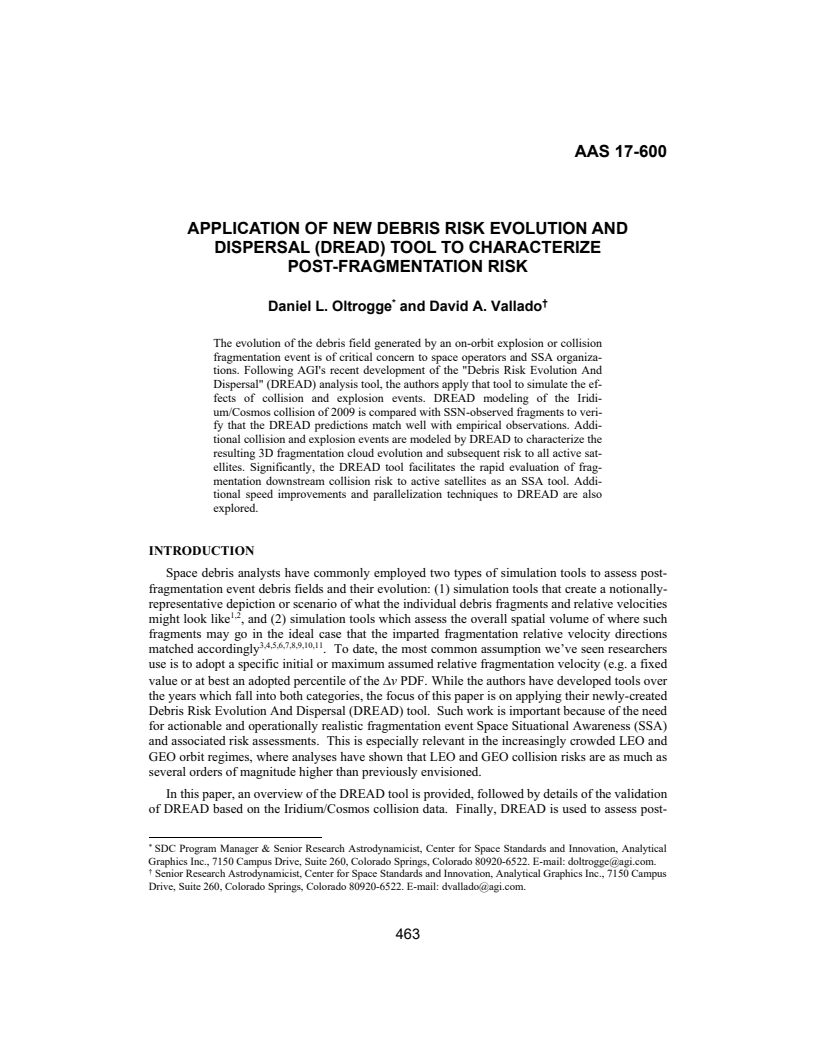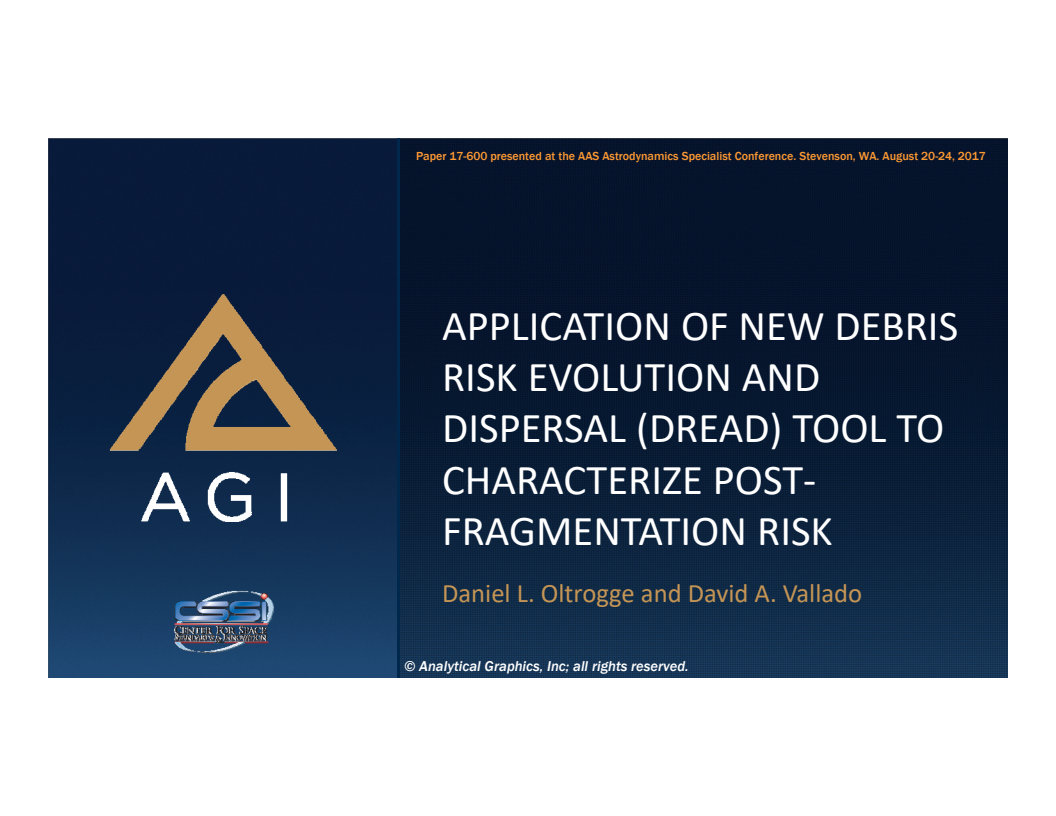Application of New Debris Risk Evolution And Dissipation (DREAD) Tool to Characterize Post-Fragmentation Risk


Id: 271
Type: Conference paper
Published: 08/22/2017
Event: AAS/AIAA Astrodynamics Specialist Conference 2017
Authors:
Click an author to filter the list of related assets below.Abstract:
The evolution of the debris field generated by an on-orbit explosion or collision fragmentation event is of critical concern to space operators and SSA organizations. Following AGI's recent development of the "Debris Risk Evolution And Dispersal" (DREAD) analysis tool, the authors apply that tool to simulate the effects of collision and explosion events. DREAD modeling of the Iridium/Cosmos collision of 2009 is compared with SSN-observed fragments to verify that the DREAD predictions match well with empirical observations. Additional collision and explosion events are modeled by DREAD to characterize the resulting 3D fragmentation cloud evolution and subsequent risk to all active satellites. Significantly, the DREAD tool facilitates the rapid evaluation of fragmentation down-stream collision risk to active satellites as an SSA tool. Additional speed improvements and parallelization techniques to DREAD are also explored.
Keywords:
Click a keyword to filter the list of related assets below.Citation:
Oltrogge, D.L. and Vallado, D.A., “Application of New Debris Risk Evolution And Dissipation (DREAD) Tool to Characterize Post-Fragmentation Risk,” 2017 Astrodynamics Specialist Conference, Stevenson WA, AAS 17-600, 22 August 2017, accessible at https://comspoc.com/Resources/Content/Private/C-20220424T105827/Paper/AAS%2017-600_PROOF.pdf
Papers with related authors:

Using Spacebook and Cesium to Promote and Enhance Flight Safety
Read More
Actionability and Persistence Of Conjunction Data
Read More
Actionability and Persistence of Conjunction Data
Read More
Practical issues with using a full gravity field
Read More
Deep operator and SSA collaboration for space sustainability
Read More
Synthetic Covariance Production Using a New Digital Approach
Read More
Actionability and Persistence of Conjunction Data
Read More
DEEP OPERATOR AND SSA COLLABORATION FOR SPACE SUSTAINABILITY
Read More

Russian ASAT Debris Cloud Evolution and Risk
Read More
Results of comprehensive STCM data fusion experiment
Read More
Debris Risk Evolution And Dispersal (DREAD) for post-fragmentation modeling
Read More
Fragmentation event debris field evolution using 3d volumetric risk assessment
Read More






LEO satellite behavior during the May 2024 Gannon geomagnetic storm
Read More
Contrasting the Inflection Points and Efforts in Space Traffic Coordination and Management
Read More
Addressing the debilitating effects of maneuvers on SSA accuracy and timeliness
Read More






Sequential Processing of ILRS Observations – Experiences over the last 5 years
Read More


Orbital Strategies to Mitigate the Solar Exclusion Effect on Space-Based Observation of the Geosynchronous Belt
Read More
New Consolidated Files for Earth Orientation Parameters and Space Weather Data
Read More
Updated Analytical Partials for Covariance Transformations and Optimization
Read More
Sequential Orbit Determination Using Satellite Laser Ranging
Read More
Improved SSA through orbit determination of Two Line Element Sets
Read More


Evaluating Gooding Angles-only Orbit Determination of Space Based Space Surveillance Measurements
Read More
ORBIT DETERMINATION ISSUES AND RESULTS TO INCORPORATE OPTICAL MEASUREMENTS IN CONJUNCTION OPERATIONS
Read More


Videos with related keywords:
Debris spread resulting from a hypothetical GEO collision.
Watch VideoHypersonic transport screening in an LCOLA tool
Watch VideoCOMSPOC simulation of Chinese ASAT engagement of Fengyun spacecraft, including discrete fragment breakup and post-fragmentation debris cloud evolution.
Watch VideoCOMSPOC simulation of Mission Shakti ASAT engagement, discrete fragment breakup, and post-fragmentation debris cloud evolution.
Watch Video